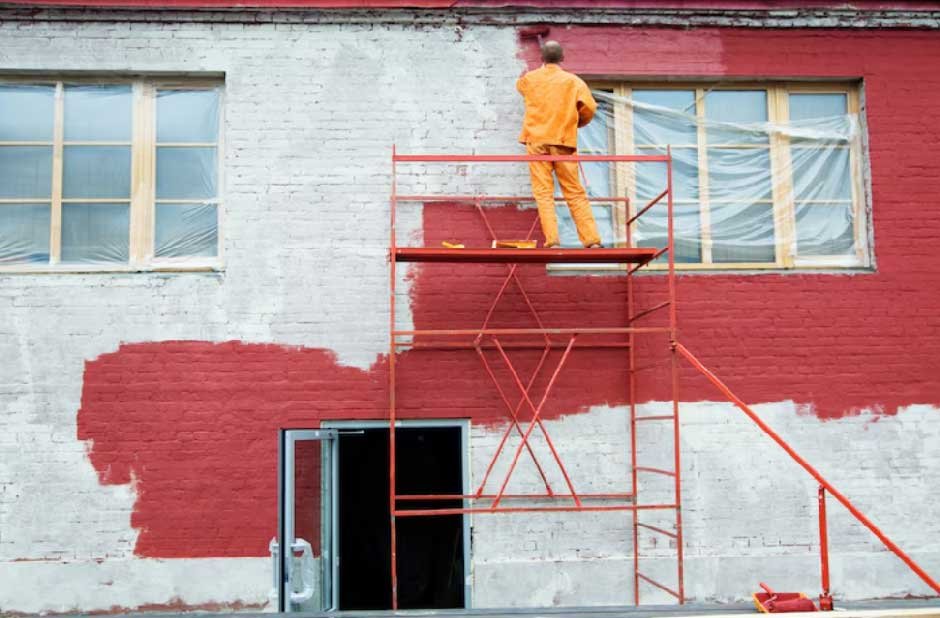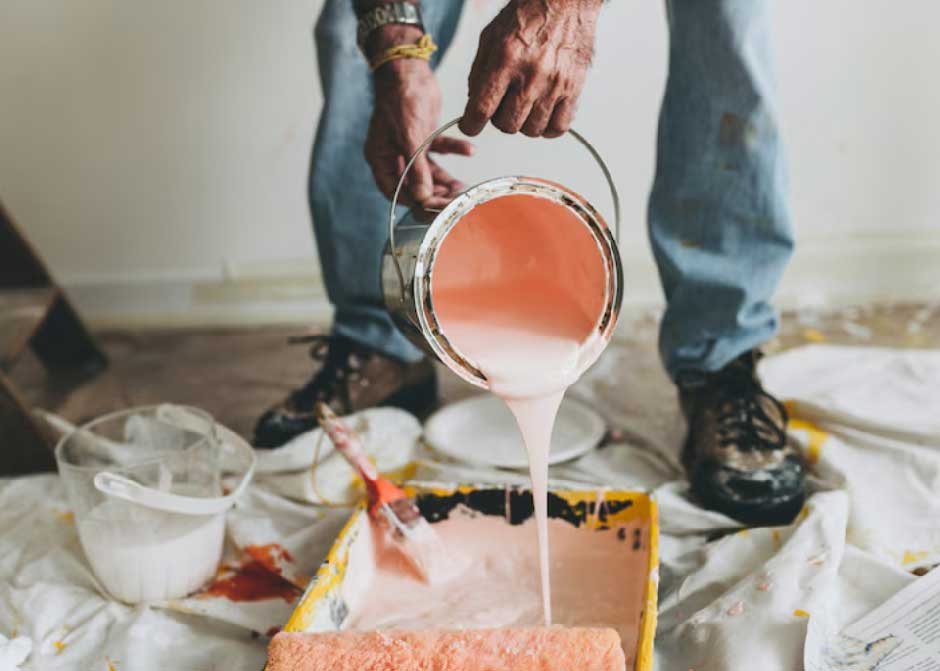Skip to the good bit
ToggleMany factors influence the final result when it comes to painting, whether it’s refreshing a bedroom wall or giving your home’s exterior a new look. One of the most overlooked yet critical variables is temperature. This article will help you understand how temperature affects paint application and performance, and guide you in choosing the right conditions for flawless results.
Why Temperature Matters in Painting
Paint isn’t just colour on a surface; it’s a chemical mixture designed to cure, dry, and adhere under specific conditions. Temperature directly impacts how well paint sticks, how evenly it spreads, and how quickly it dries. Understanding the best temperature for painting helps avoid common issues, such as being too hot, which can cause paint to dry too fast, causing cracks or visible brush strokes. Too cold, and paint may thicken, fail to cure properly, or even peel after application.
Understanding the ideal temperature range for your painting environment ensures a smooth, durable, and lasting finish.
Interior vs. Exterior Painting: A Detailed Comparison for Optimal Results
When planning a painting project, understanding how temperature affects application and drying time can mean the difference between a flawless finish and a peeling disappointment. Whether you’re refreshing your living room or tackling your home’s exterior, knowing the optimal conditions for each setting ensures your hard work pays off. This guide dives into the science of temperature’s role in painting and how to adjust your strategy accordingly.
Interior vs. Exterior Painting: A Quick Comparison
Interior Painting
Indoor painting tends to be more controlled. Because it’s sheltered from the elements, indoor environments don’t experience wide fluctuations in temperature. Most homes remain within a comfortable climate range, usually between 18°C and 24°C (65°F–75°F). This makes it easier to maintain the consistent temperatures required for proper paint adhesion and curing. However, adequate ventilation is crucial, especially when using oil-based paints, to avoid inhaling fumes and to help with drying time.
Exterior Painting
Painting outside introduces a host of uncontrollable variables: sun exposure, humidity, wind, and temperature swings. Unlike interiors, outdoor surfaces can heat up significantly under direct sunlight or cool down rapidly in the evening. Depending on these factors, paint may dry too fast or too slow, impacting its ability to form a uniform and durable film. That’s why exterior projects require more planning around the time of day and weather conditions to ensure successful results.
The Science Behind Temperature and Drying Time
Paint drying involves more than just surface dryness. There are two key phases: solvent evaporation and chemical curing. Temperature affects both:
- Too Cold (<10°C / 50°F):
Paint takes longer to evaporate moisture or solvents, which increases the risk of dripping, sagging, or not curing at all. In latex paints, cold weather can cause water content to freeze or slow drying so much that the paint fails to bond properly. Trapped moisture may also cause bubbling or peeling later on. - Too Hot (>32°C / 90°F):
When temperatures are too high, paint may dry too quickly on the surface without allowing the lower layers to cure properly. This leads to lap marks, an uneven finish, and reduced adhesion. Extremely hot surfaces, like sunlit siding or metal railings, can even “cook” the paint, making application difficult and reducing longevity.
Maintaining an optimal, mid-range temperature lets the paint level out naturally, adhere to the surface, and form a uniform, long-lasting coating.
Note: Always consider humidity alongside temperature. High humidity can significantly extend drying times, especially with water-based paints. Even if the temperature is within the ideal range, too much moisture in the air can compromise adhesion and finish quality.
Tips for Painting at the Right Temperature
Check the Forecast
For outdoor projects, plan around stable, mild weather. Look for at least 2–3 days of dry conditions with temperatures within the recommended range. Avoid days that are overly hot, cold, or windy.
Time It Right
On warmer days, start painting early in the morning before the sun heats the surface too much. On cooler days, wait until the late morning or early afternoon, when outdoor temperatures have risen slightly. This ensures the surface is at an ideal temperature, not too cold or hot, for paint to bond properly.
Acclimate Materials
Always store your paint and tools in a climate-controlled environment before starting. Even if you paint outside, cold paint can affect consistency and flow. Letting your materials acclimate to the ambient temperature improves application and performance.
Use the Right Formulation
Many paint manufacturers offer products designed for specific conditions, such as “low-temp” paints or fast-drying exterior coatings. Always read the label and choose a formulation suited to your project’s environment.

Conclusion
Temperature matters when painting inside a cosy home or tackling a sun-drenched exterior wall. It’s more than just a number, it directly impacts how paint behaves, dries, and ultimately performs over time. By understanding the ideal conditions for your specific paint type and project environment, you set yourself up for a smooth, professional-looking result that lasts. Plan, check the forecast, and trust that the extra preparation will lead to better coverage, fewer issues, and a finish you can be proud of.







